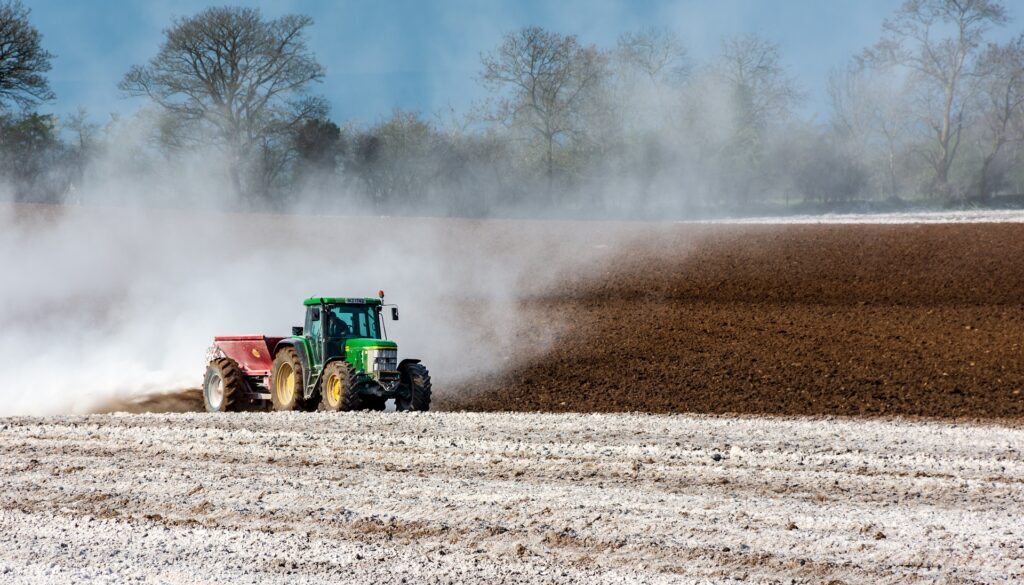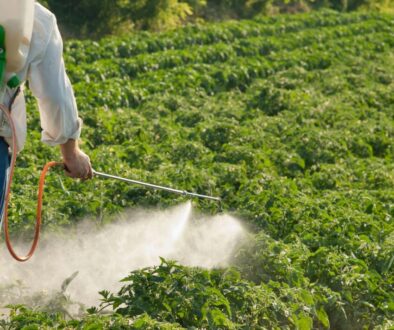Flaws in carbon credit programs for farms draw concerns
As fears about climate change grow, a new “gold rush” of carbon credit programs are incentivizing US farmers to slash greenhouse gas emissions generated by the practices they use growing crops and raising livestock. But experts say the programs face difficulty in ensuring that the credits provided truly match emission cuts.
The US Environmental Protection Agency (EPA) estimates that agriculture accounted for 11.2% of US greenhouse gas emissions in 2020. Greenhouse gases trap heat from the sun in the atmosphere, triggering harmful climate changes and increasing temperatures worldwide. Carbon dioxide is released when farmers till their fields, for instance, and nitrous oxide, a greenhouse gas with almost 300 times more warming potential than carbon dioxide, is released when farmers spread fertilizer or manure on their fields.
In one increasingly popular mitigation strategy, private carbon programs pay farmers for implementing practices known to reduce greenhouse gas emissions, generating credits that can then be sold to large corporations wanting to use the credits to offset their own emissions. One tradable carbon credit equals one ton of carbon dioxide, or the equivalent amount of a different greenhouse gas reduced, sequestered or avoided.
Many programs pay farmers for planting cover crops — a practice shown to limit the amount of carbon dioxide that soils release into the air. But few offer any incentives for farmers to reduce nitrous oxide emissions, though nitrous oxide is a highly potent greenhouse gas. A 2021 report estimated nitrous oxide made up for 2.4% of total global greenhouse gas emissions, while the EPA estimates nitrous oxide makes up over half of all greenhouse gas emissions from agriculture.
As the popularity of carbon credit programs grows, concerns and questions about the validity of the programs to truly reduce greenhouse gas emissions from farms are also emerging. Carbon credit schemes have been criticized for a lack of rigorous accounting of the amount of carbon dioxide lost from soils. Additionally, the difficulty of measuring nitrous oxide emissions could mean some businesses are paying for carbon credits that don’t really reduce emissions as much as promised.
That’s the “worst-case scenario,” said Eric Slessarev, a biogeochemist at the Lawrence Livermore National Laboratory. “We better hope we’re right, on average, because if we’re not right, then we’re in trouble,” he said.
Farmers can reduce nitrous oxide emissions by changing the type and amount of fertilizer used and the timing of applications of fertilizer and manure. But some farmers are wary of making changes that may cut crop yields, and few of the major carbon credit programs available offer direct incentives to help farmers cut nitrous oxide emissions.
Steven Hall, a professor of biogeochemistry at Iowa State University, has studied the issue and says his research shows that nitrous oxide emissions in the US Corn Belt have been historically underestimated. That means the potential for reducing the potent greenhouse gas through fertilizer management is enormous.
“Small changes in fertilizer management can have a larger climate impact than practices focused on carbon storage. And I think that message still has yet to really sink in more broadly,” said Hall.
A potentially bigger problem lies in the lack of an ability to accurately track and measure cuts in such emissions. Those programs that do offer incentives for nitrous oxide reductions make use of estimations and mathematical models, rather than on-site measurements, to confer credits. Experts worry that the lack of verifiable data means corporations using credits from farms may not be actually getting the offsets they’re using to allow for their own emissions.
Carbon credit programs often measure reductions in carbon dioxide emissions by taking soil samples from farm fields. But measuring nitrous oxide is highly technical and expensive, and some programs that incentivize nitrous oxide reductions do not require actually measuring on-the-ground changes in emissions of the gas.
Third-party registries work with carbon credit programs to evaluate their processes and issue carbon credits. Two of the major registries in the US , Verra and Climate Action Reserve, do not require on-the-ground measurements of nitrous oxide emissions in their protocols.
Part of the reason it’s hard to measure nitrous oxide is that changes in emissions can vary widely across a single farm field, said Slessarev. “It’s very hard to catch,” he said.
The strength of nitrous oxide emissions also vary depending on the climate and region where a farm is located, said Hall. For example, drier ecosystems tend to have lower nitrous oxide emissions than wetter ecosystems. Additional research into nitrous oxide emissions from farming could help carbon credit programs confer more accurate credits.
“When you try to actually think about predicting [nitrous oxide] at the field or the subfield scale, it gets challenging, and there’s a lot more uncertainty,” said Hall.



